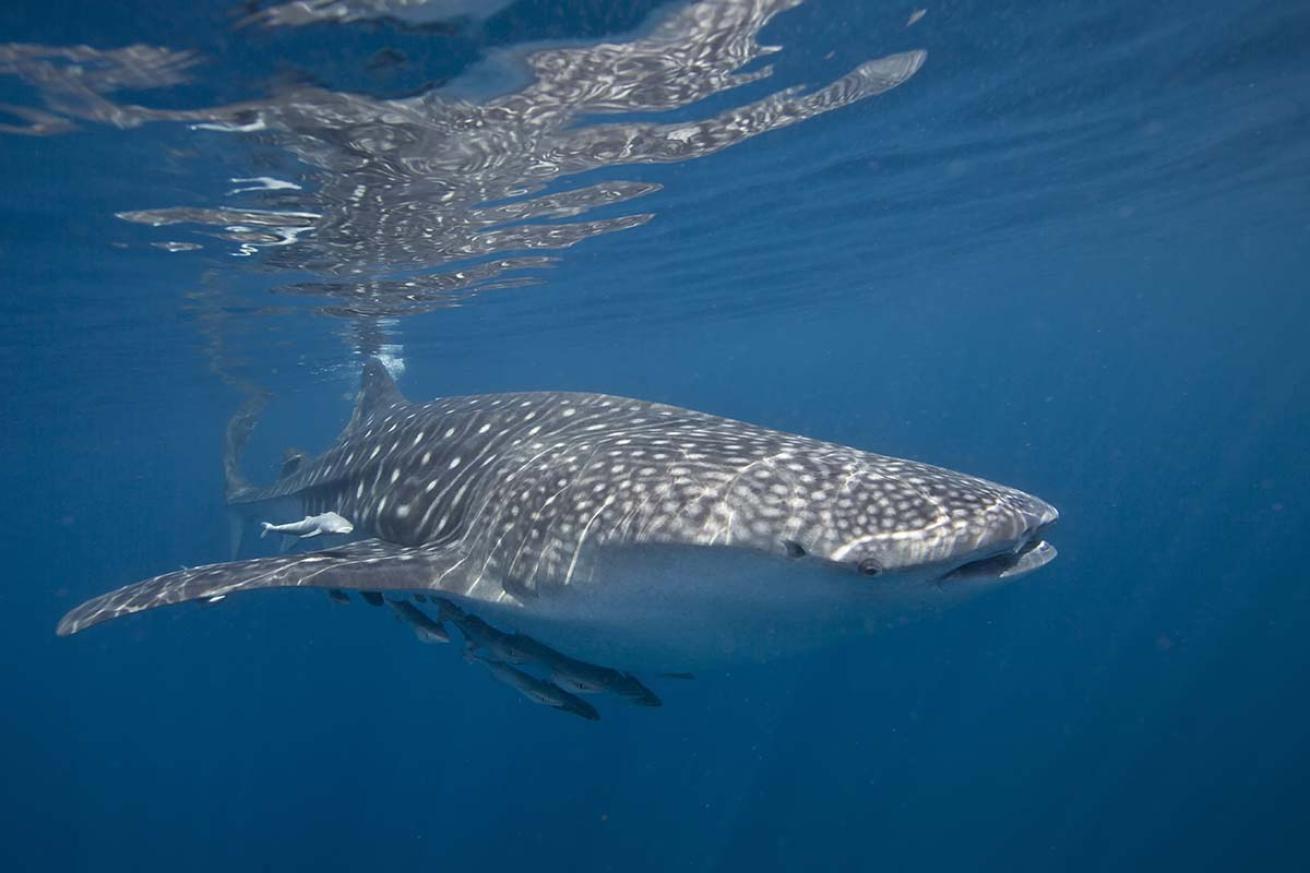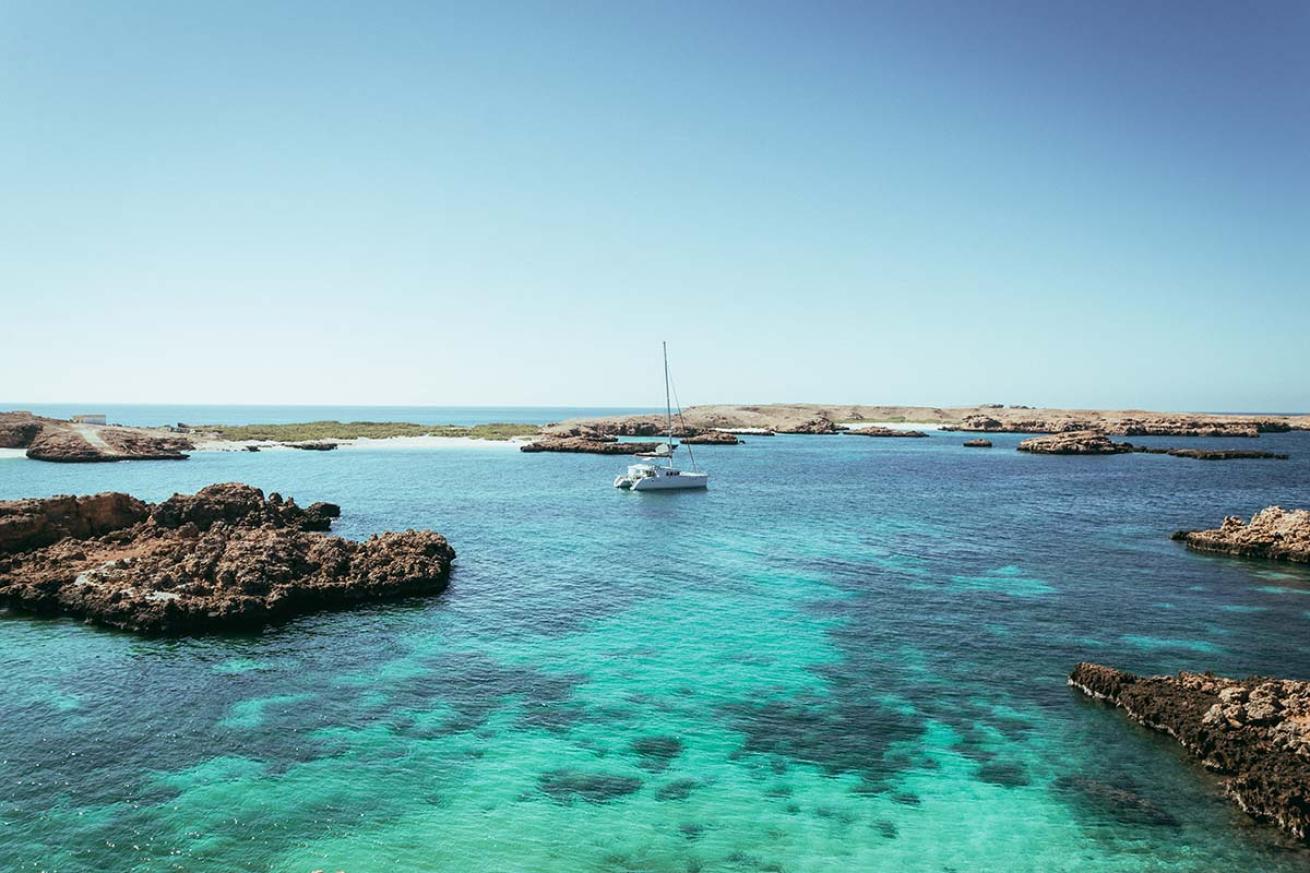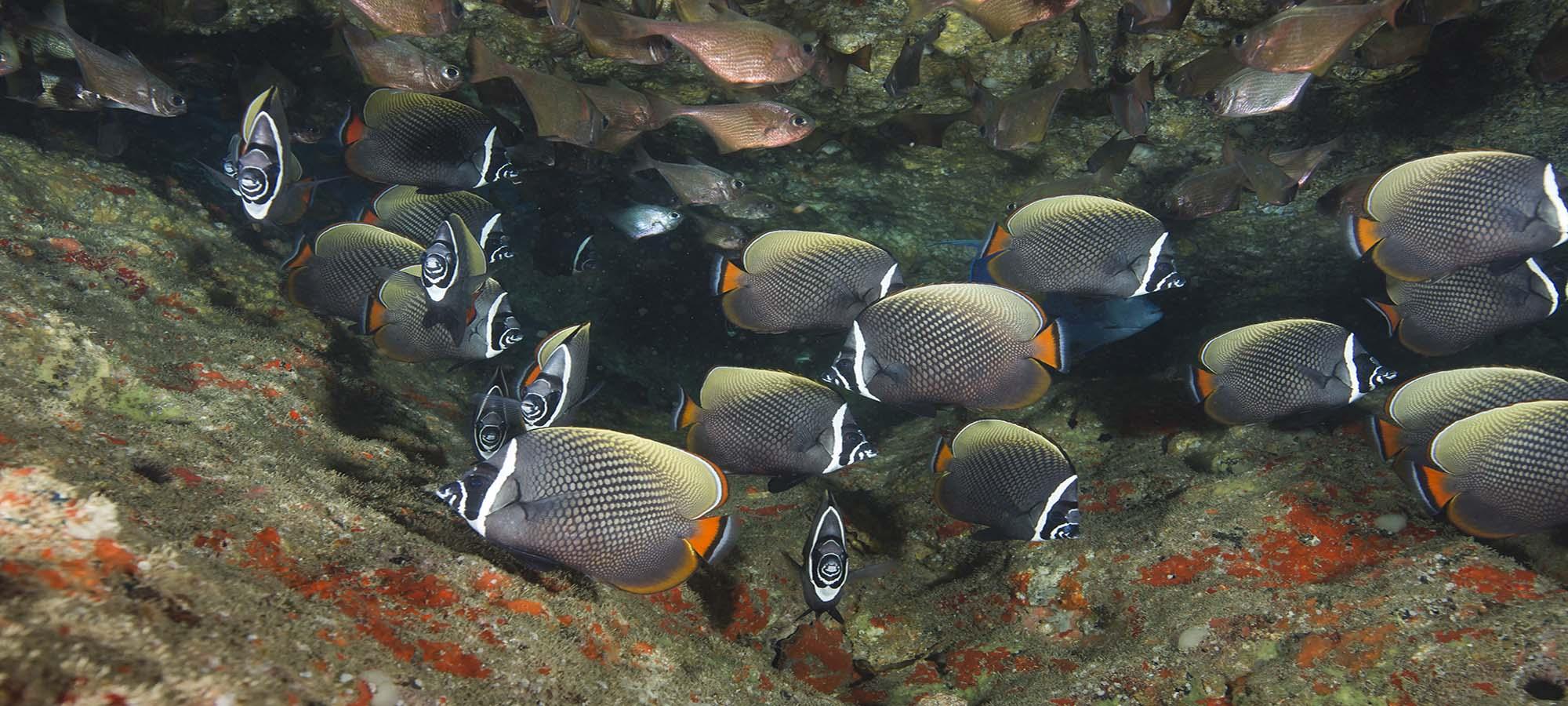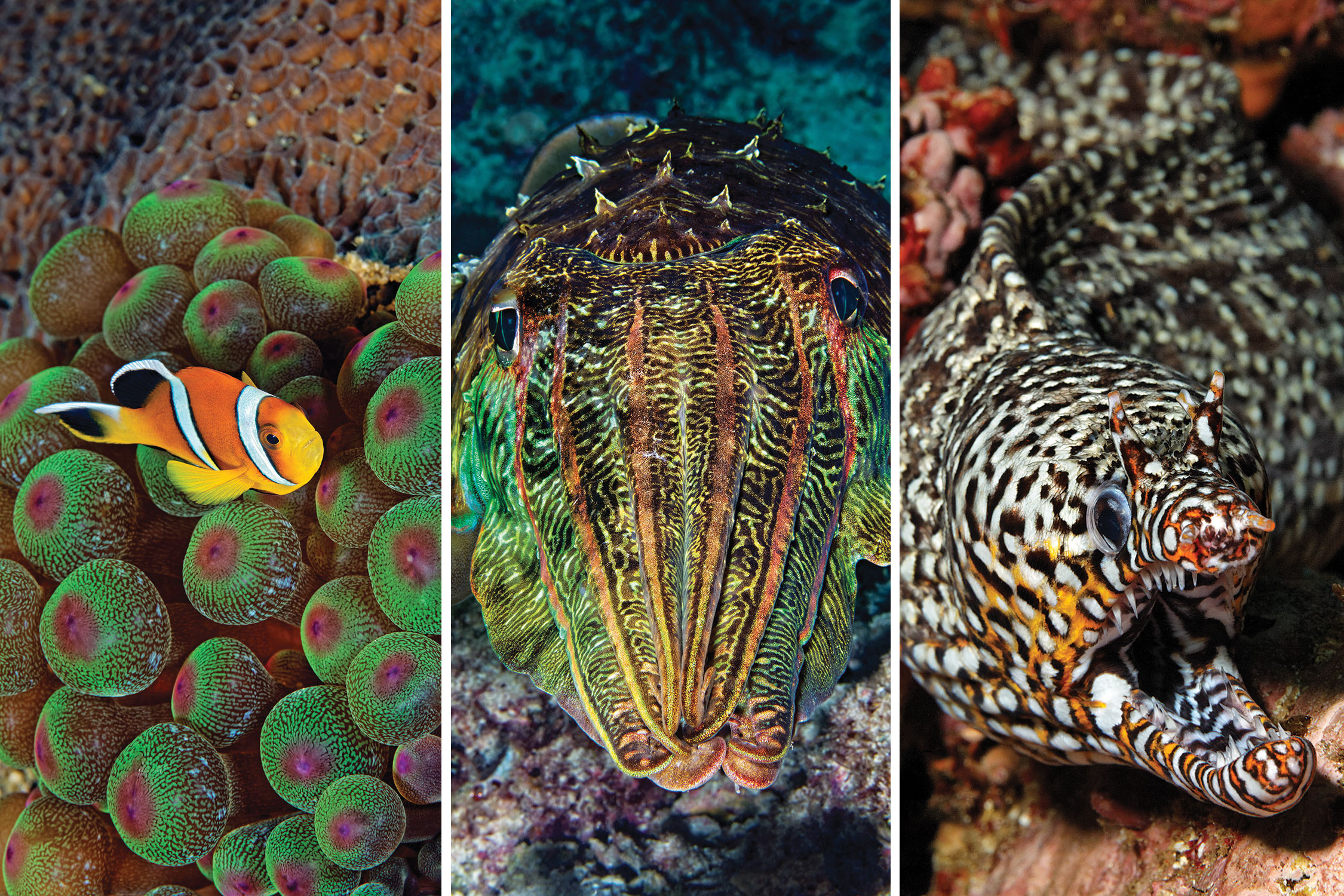A Local's Guide to Scuba Diving the Daymaniyat Islands in Oman
“All eyes on the water to spot the whale sharks,” the boat captain said as we made our way into the Arabian Sea. It was a bright and sunny September afternoon as I sailed from Al-Mouj Marina in Muscat to the Daymaniyat Islands, an archipelago of nine small islands about 40 miles off the coast.
The sea looks as calm as I have ever seen it. I grew up in Oman and I have plenty of fond memories of visiting beaches all around Muscat, back before international tourists started arriving. But word is getting out about our more than 1,800 miles of coastline.
“I never imagined that I would be diving in Oman!” a fellow diver said as we cruised across the blue.
Daymaniyat Island is one of the best diving sites in the Middle East, but it only opened to the public a few years back to promote Oman as an up-and-coming water tourism destination in the Middle East. Until 2013, the only island trips to the island were non-recreational trips for marine research and conservation of marine life carried out by the Oman Environment Authority. The sole marine nature reserve in Oman, the island was given the protected status of a nature reserve in 1996 for the conservation of nesting turtles, healthy coral formations, and the migration channel for the migratory birds and marine mammals—including the whale sharks.
Forty-five minutes into the ride, the limestone cliffs of the Daymaniyat Islands began to appear. I had spent plenty of time diving, snorkeling, and turtle watching at the Daymaniyat Islands, but today I am a first-time whale shark spotter.

Shutterstock.com/SeraphPA whale shark feeds near the surface off a coral reef near Oman's Daymaniat Islands.
“Gear up for your dive,” Mido, the divemaster, said. While anchored, we spotted a 18-foot long whale shark calmly swimming across our boat surrounded by a shoal of eels. It passed near the surface only for a few minutes before disappearing into the water.
Colorful coral reefs slide into view to appear as we drop about 20 feet. The northeastern bay of Daymaniyat Island is the best coral reef spot on the island — I’ve encountered tiger sharks here repeatedly and heard of mola mola encounters too from the returning divers. The Angelfish and Arabia Butterflyfish sneak in and out from beneath the corals as we swam past them, clownfish darting all around.
As we move deeper to the site’s southern end, the whale shark reappears again in the distance. Our cameras intact, we hasten over. There are four other boats on the island, but we’re lucky — none of them are here right now. This encounter is ours and ours alone.

Shutterstock.com/Marco Staller GranicherThe Daymaniyat Islands
The whale shark’s graceful, hulking form swims past us at a slow pace, unbothered by our presence. Plenty of photos with the whale shark later, Mido signals us to ascend.
The sun sets into the sea as we sail back to the marina. I watch, in awe as always at this majestic home of animals large and small. Slowly but surely, the world is on its way to my shores. When it finally arrives, you’ll find me underwater.
Need to Know
Best time to go: Daymaniyat Island is accessible all year round with viz ranging from 60 to 90 feet. The weather is mostly dry unless there is a special weather advisory. The best time to spot whale sharks here is from September to November when they pass through the area during their migration towards the warmer waters of the southern hemisphere.
Getting there: A 45-minute boat ride from Al-Mouj Marina, Muscat.
Operator: Mola Mola Diving Center
Cost: A half-day trip costs $150 inclusive of all equipment, tow dives and food.
Regulations: Fishing is strictly prohibited on the island and special authorization is required for overnight camping. The island is regularly patrolled by the Royal Oman Police sea guards.












